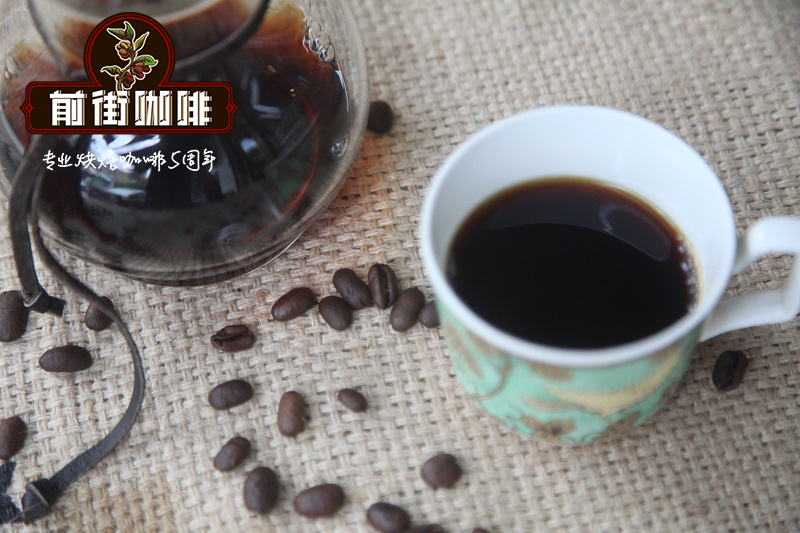The extraction standard of Italian concentration, how to do Italian concentration

Professional coffee knowledge exchange more coffee bean information please follow the coffee workshop (Wechat official account cafe_style)
Italian concentrated extraction judgment plays an important role in a coffee shop that pays attention to coffee quality, because Italian concentrated coffee is not brewed by hand, French filter pot, or siphon (siphon kettle). After brewing, you can take a sip to confirm the flavor and quality of the coffee, but it is the base of most coffee consumers' favorite drinks (such as latte, cappuccino, etc.). In addition to the right milk, Italian concentration with near-perfect extraction is also indispensable to drink a cup of cappuccino with excellent flavor, so Italian concentrated extraction depends on other reliable information to help baristas judge.
The traditional Italian judgment rules are as follows: 8-10 atmospheric pressure, 7 g coffee powder, 86-90 ℃ water temperature, 25 ±2.5 ml single espresso extracted in 20-30 seconds, or 50 ±5 ml double espresso extracted with 14 g coffee powder at the same time and pressure, usually using the double shunt filter handle (double portafilter), which is common in most cafes. As long as the coffee obtained meets the above range, it is considered to be a cup of normally extracted espresso.
Later, the American Fine Coffee Association (Specialty Coffee Association of America, referred to as SCAA) had a slightly different interpretation of espresso: extracting a single espresso of 45 ml at 9-10 atmospheric pressure, 7-9 g of coffee powder, 88-92 ℃ of water temperature, and 22-28 seconds. However, in practice, it will be found that such data are only for reference, because there is a big gap between the roasting degree of coffee and the understanding of coffee flavor in the past decade. In the past, deep-roasted formula concentrate dominated the market, and espresso with an emphasis on nutty and cocoa flavor was very popular. If the water temperature is too high, the bitter flavor will be extracted, which is slightly different from the 93-94 ℃ used in today's light and light roasted coffee. Coupled with the rapid development of coffee machine manufacturing technology in recent years, coffee machines with variable pressure and pressure curve (pressure profiling) have been invented, and the brewing pressure is no longer a fixed 9 atmospheric pressure, whether it is the introduction of prepreg pressure (pre-infusion) or mid-stage slow drop pressure extraction (gentle ramp out of pressure). All kinds of pressure curves that exceed the old rules have been tested and tested one after another. Even the same coffee bean has different flavor spectrum under different pressure curves.
During the third wave of the Coffee Revolution, coffee people who advocated science-based extraction not only narrowed the reasonable scope of normal extraction, but also added a lot of criteria that could help judge whether it was good or bad. it was considered that in general, Italian concentrated extraction should use 18 g coffee powder, obtain a liquid weight of about 30 g, water temperature 92-94 ℃, and extraction time 25-27 seconds. It can be noted that coffee can be judged from the volume of coffee liquid to a more accurate actual weight of coffee liquid. This is because coffee is affected by various factors, such as brewing pressure, roasting depth, freshness, and so on. Judging by volume, coffee fat (crema) is very unreliable. The water temperature also rose to 92-94 ℃ due to the shallower roasting of the third wave of coffee. In addition, the invention of the bottomless handle (bottomless portafilter) also allows baristas to observe the extraction of coffee throughout the process. If there are problems such as uneven extraction (uneven extraction), channel effect (channeling), and early whitening (blonde gusher), they can quickly remake a cup of coffee before serving it to the guests. Since I first came into contact with the espresso machine, I have been lucky to use bottomless handles to extract espresso, giving me the opportunity to observe the extraction of each cup of coffee, thus giving me a lot of opportunities to learn.
Important Notice :
前街咖啡 FrontStreet Coffee has moved to new addredd:
FrontStreet Coffee Address: 315,Donghua East Road,GuangZhou
Tel:020 38364473
- Prev

The extraction problem of Italian concentration, how to do Italian concentration
Professional coffee knowledge exchange more coffee bean information please pay attention to the coffee workshop (Wechat official account cafe_style) over-extraction (Over-extraction) must first understand the concept of extraction rate, according to VST Coffee Refractometer (coffee refractometer, the official designated measuring instrument for a number of coffee international competitions), reasonable coffee extraction rate (
- Next

How about Platinum Coffee College? Can you learn the real thing? How much is the tuition fee of Beijing Pulan Coffee College
Professional coffee knowledge exchange more coffee bean information please follow coffee workshop (Wechat official account cafe_style) Platinum Coffee Institute in Beijing's East third Ring Road Jianwai soho, since its inception in 2007, to share the way of life as the original intention, coffee education and training as the main business, is to actively explore coffee science and technology, practice coffee management, spread coffee culture and create value
Related
- What is the meaning of lactic acid fermentation with coffee bean treatment?
- How to judge the state of foam by sound?
- How does the latte pull out the unicorn pattern? Come to get for a little trick to improve the flower pull!
- Will flower pulling affect the taste of the latte?
- Do you know the history of coffee?
- The difference between honey treatment and sun washing what is raisin honey treatment?
- What kind of milk can a novice use to make coffee foam to keep the foam longer? The correct method and skills of milking tutorial sharing
- Why do washed coffee beans taste sour? Flavor characteristics of washed Coffee
- Introduction to the skill of how to practice the size and height of water injection around the circle of hand-brewed coffee
- How do beginners practice coffee flower drawing from scratch?

